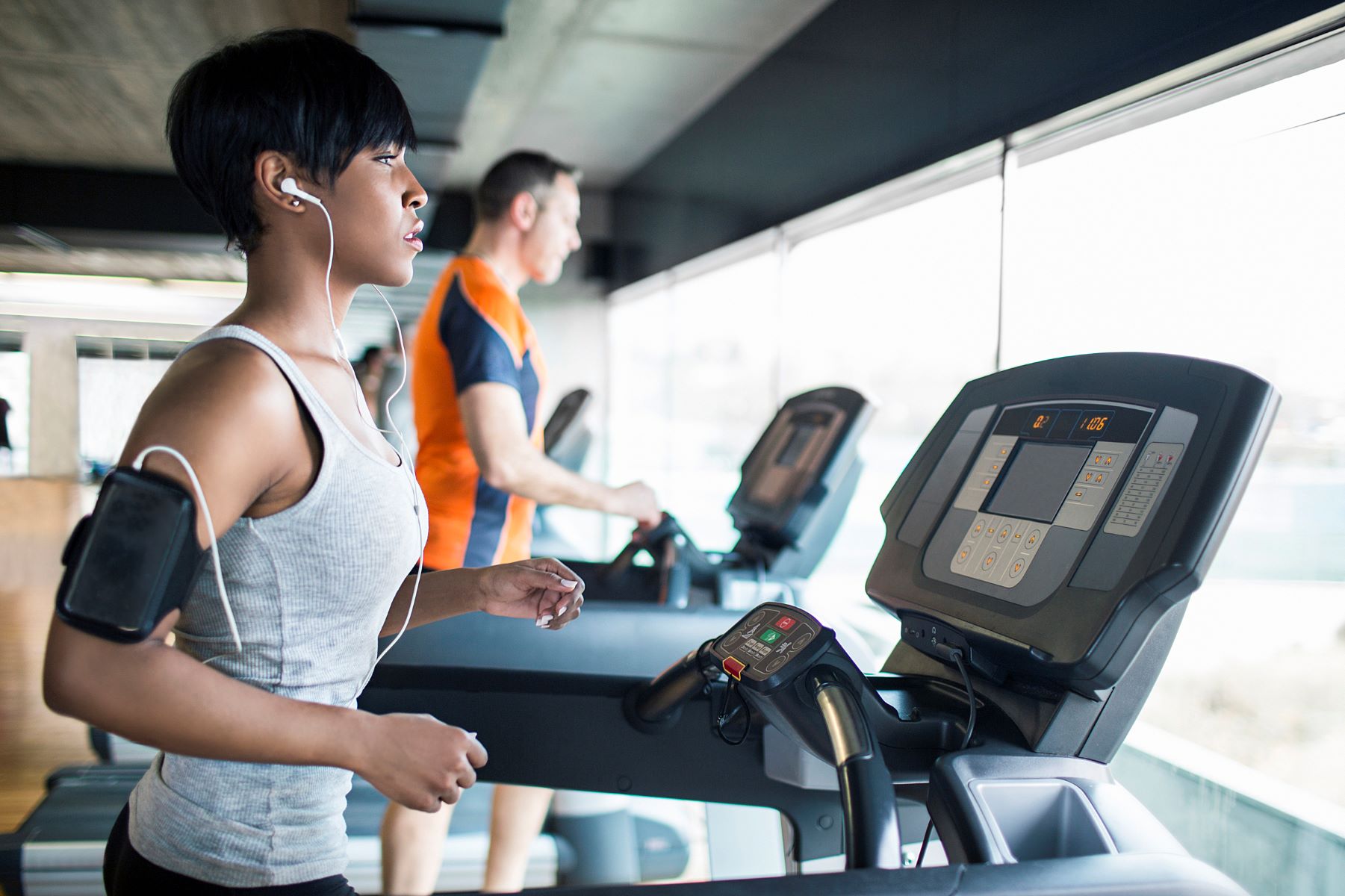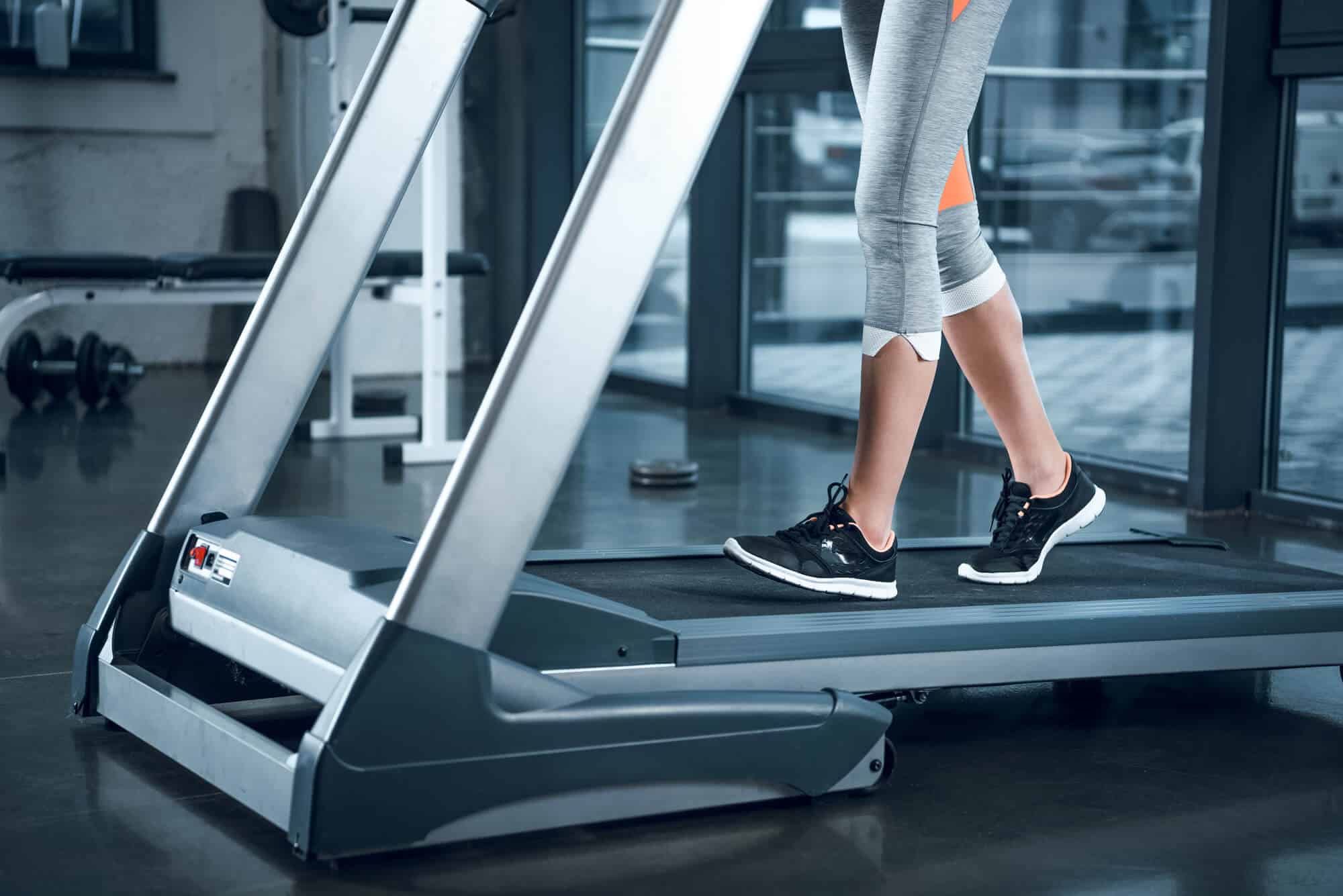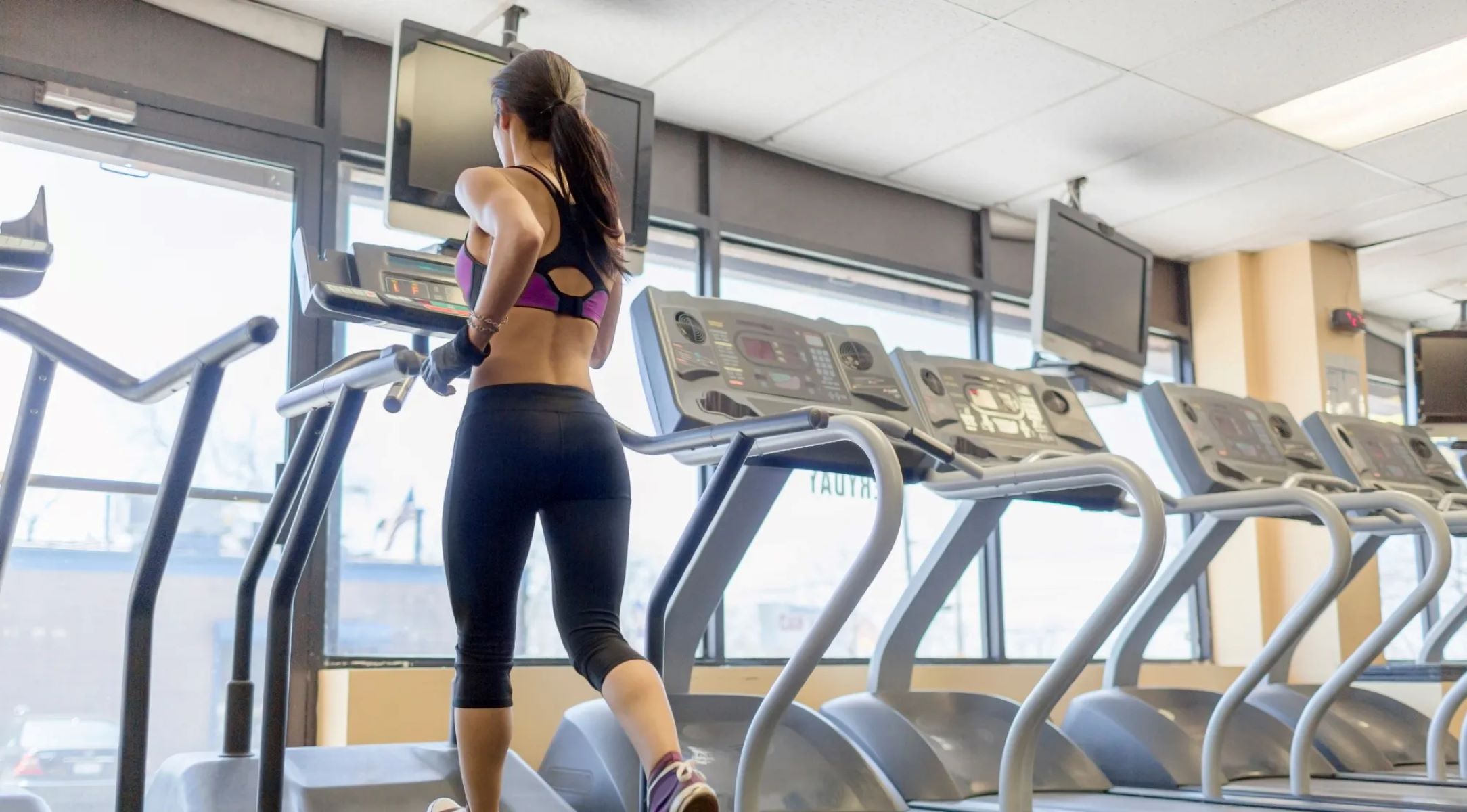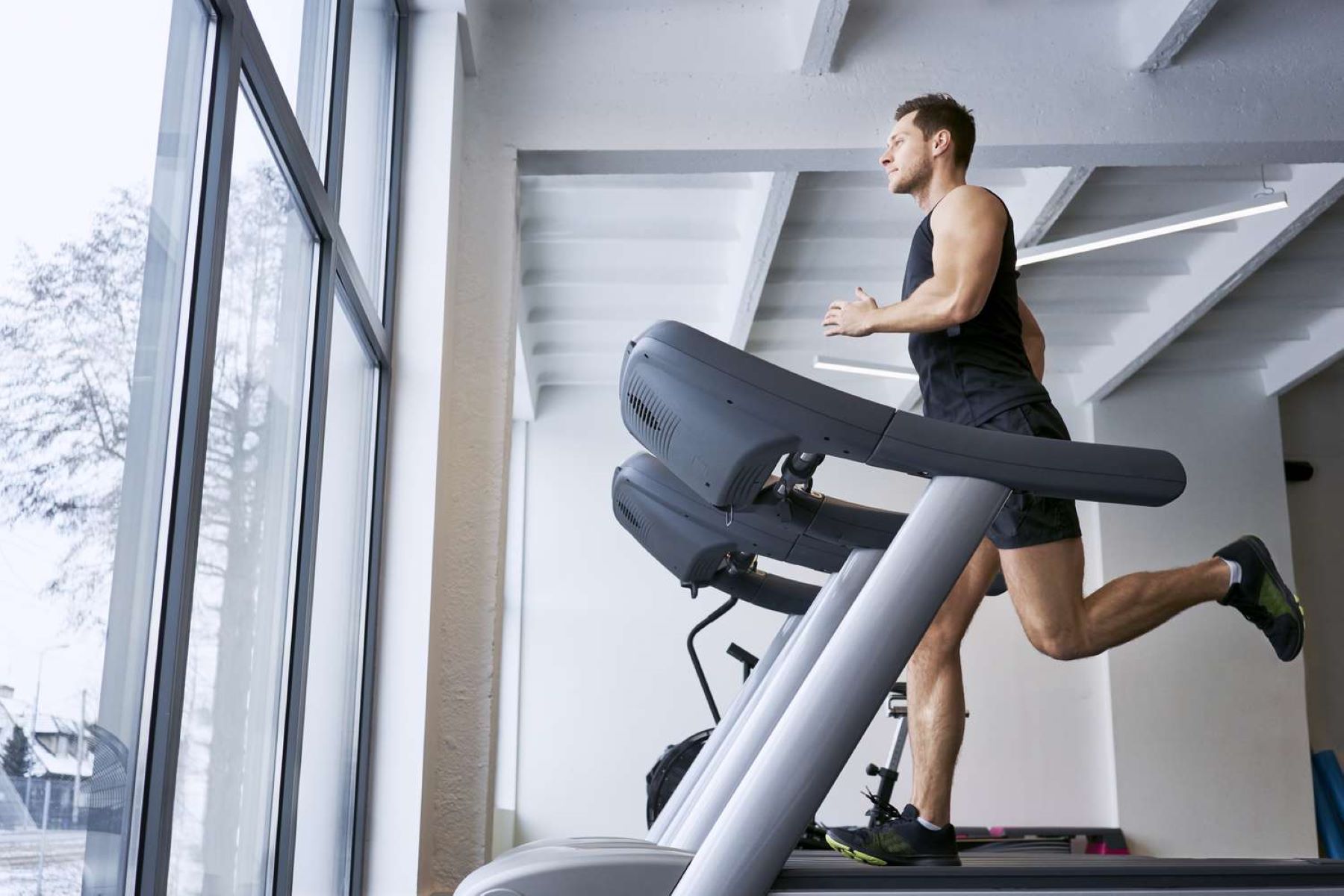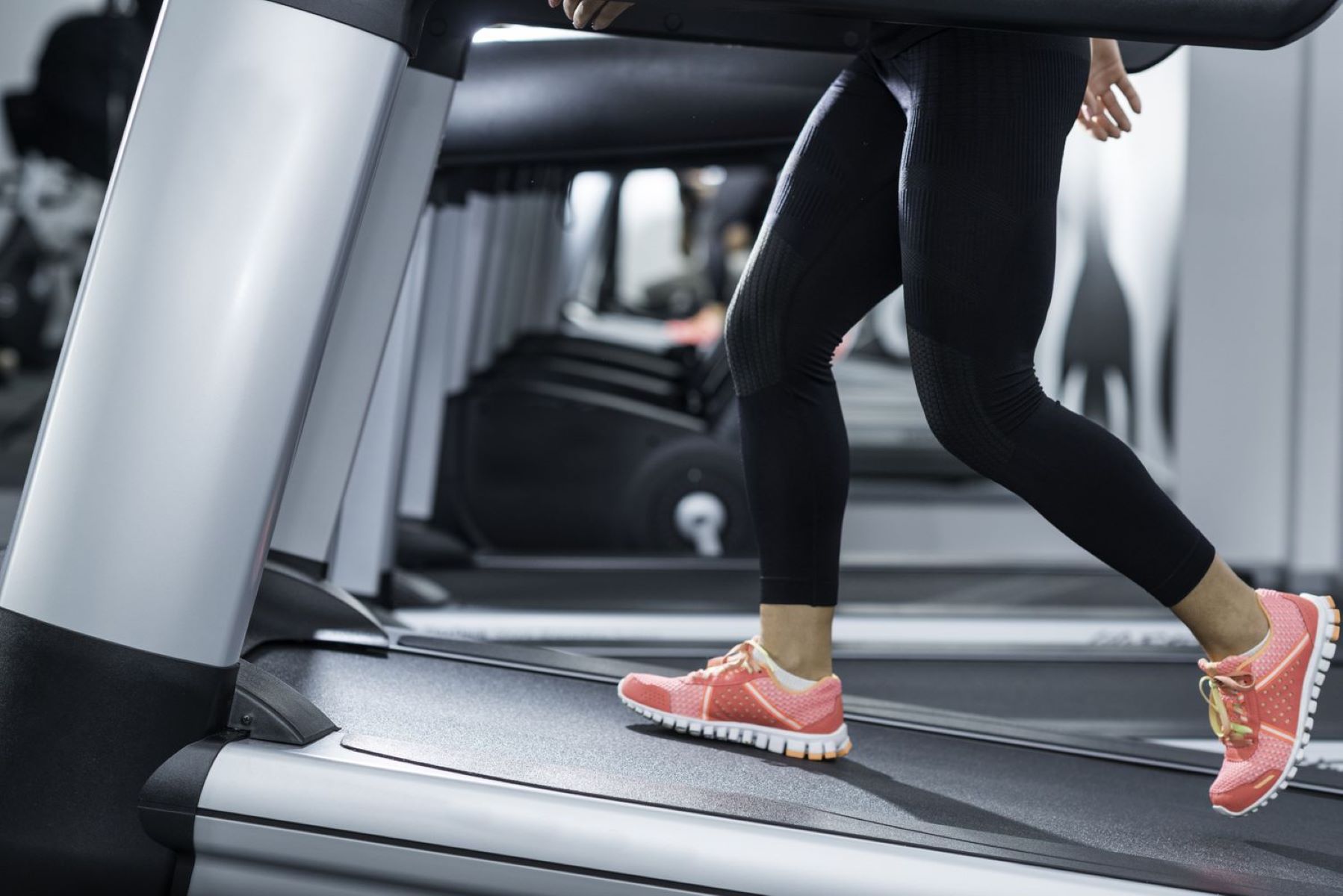Home>Misc>Featured>What Is Considered A Brisk Walk On A Treadmill
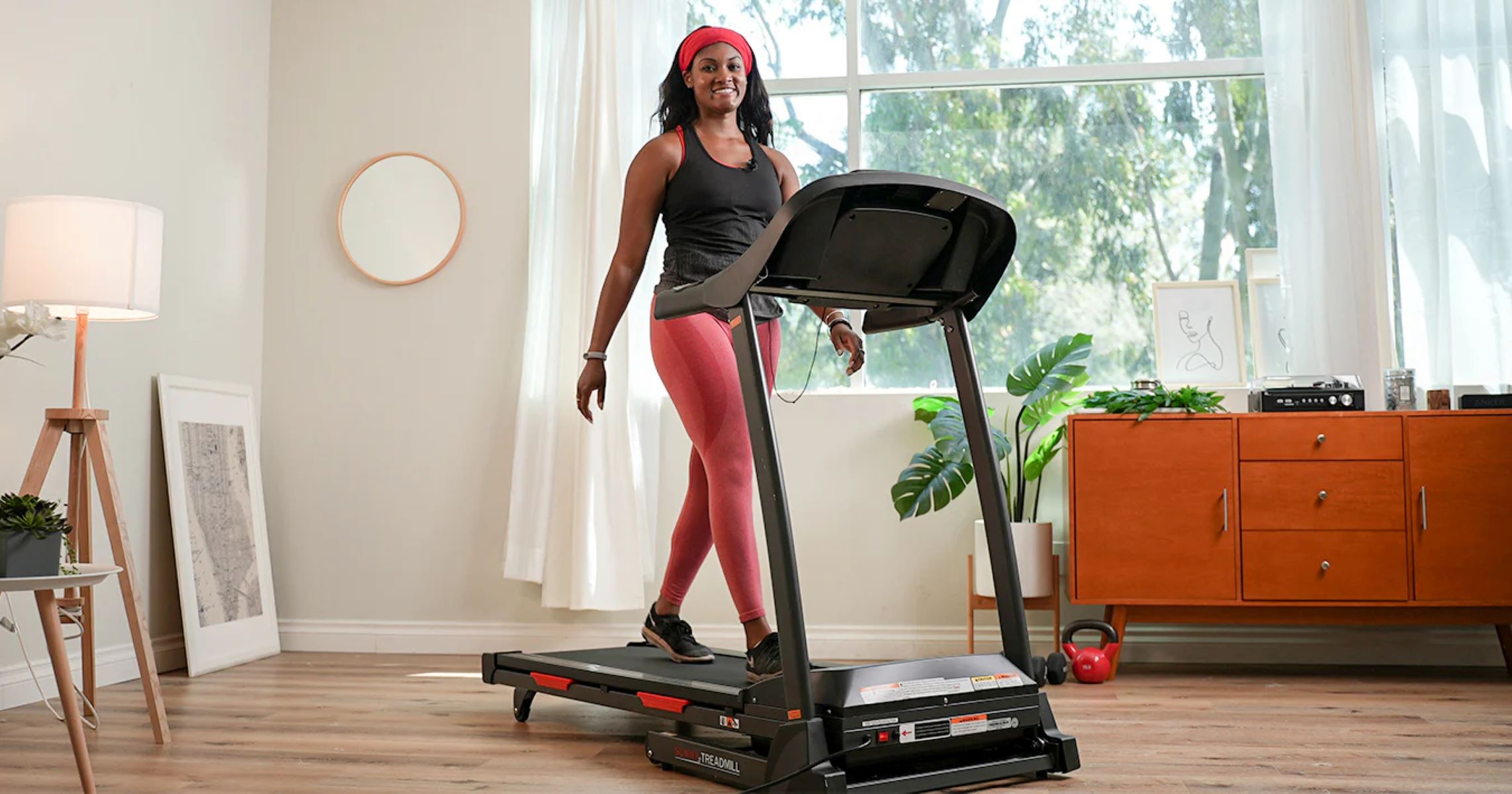

Featured
What Is Considered A Brisk Walk On A Treadmill
Modified: January 2, 2024
Discover what is considered a brisk walk on a treadmill as we explore the benefits and guidelines of this featured exercise.
Introduction
Welcome to the world of fitness and exercise! Walking is a fantastic form of physical activity, and using a treadmill allows you to conveniently and comfortably engage in this exercise anytime, regardless of the weather outside. But what exactly is considered a brisk walk on a treadmill? In this article, we will explore the definition of a brisk walk, the benefits it offers, the different types of treadmills available, and the factors that can affect the speed of a brisk walk on a treadmill.
Walking is a low-impact aerobic exercise that offers numerous health benefits, including improved cardiovascular fitness, increased muscle strength and endurance, and enhanced mental well-being. Brisk walking takes walking to the next level by increasing the intensity and pace of the exercise. It is a faster pace than a leisurely stroll, elevating your heart rate and challenging your body to work harder.
Utilizing a treadmill for brisk walking has become incredibly popular due to its convenience and versatility. With a treadmill, you have the flexibility to control the speed, incline, and duration of your walk. Whether you have a dedicated home treadmill or use one at the gym, understanding what constitutes a brisk walk will help you optimize your workout and achieve your fitness goals more effectively.
When it comes to measuring the intensity of a brisk walk on a treadmill, the speed at which you walk plays a crucial role. However, it is important to note that what may be considered brisk for one person may be challenging for another. Factors such as age, fitness level, and overall health should be taken into account when determining the ideal brisk walking speed on a treadmill.
Now that we have established the importance of brisk walking and the role of a treadmill, let us dive deeper into what exactly constitutes a brisk walk and the benefits it provides.
Definition of a Brisk Walk
A brisk walk is a form of moderate-intensity aerobic exercise that is characterized by a faster pace than a leisurely stroll. It is a purposeful and energetic walk that increases your heart rate and breathing rate. The intensity of a brisk walk is typically defined as walking at a speed that allows you to maintain a conversation, but with some exertion. It is often described as a comfortable yet challenging pace.
While the exact speed of a brisk walk may vary from person to person, a general guideline is to aim for a speed of around 3 to 4 miles per hour (4.8 to 6.4 kilometers per hour) on a treadmill. However, it is important to remember that individual fitness levels and goals can influence the optimal speed for each individual.
One way to determine if you are walking at a brisk pace is to assess your breathing. During a brisk walk, your breathing should become deeper and more rapid, but you should still be able to carry on a conversation without feeling out of breath. If you find yourself struggling to speak, you may be walking too fast and should slightly reduce your speed.
It is essential to maintain good posture while brisk walking on a treadmill. Keep your head up, shoulders relaxed, and swing your arms naturally to enhance the overall efficiency and effectiveness of your exercise. Engage your core muscles to provide stability and balance.
Brisk walking offers a wide range of health benefits. It can help improve cardiovascular fitness, strengthen muscles (especially in the lower body), promote weight loss, reduce the risk of chronic diseases, enhance mood, boost energy levels, and improve overall physical and mental well-being.
Remember, the goal of a brisk walk is to raise your heart rate and elevate your level of exertion, but it should still be a sustainable pace. It should be challenging enough to stimulate the body’s systems, but not so strenuous that it becomes uncomfortable or causes pain. Adjust the speed of your treadmill accordingly to find your optimal brisk walking pace.
Benefits of Brisk Walking
Brisk walking, when done regularly and at an appropriate intensity, offers a multitude of health benefits. This form of exercise not only improves your physical well-being but also positively impacts your mental and emotional health. Let’s explore some of the key benefits of brisk walking:
- Improved cardiovascular fitness: Brisk walking gets your heart pumping and increases blood flow, improving the health and efficiency of your cardiovascular system. It helps lower blood pressure, reduce the risk of heart disease and stroke, and improve overall heart health.
- Weight management: Brisk walking is an effective way to burn calories and maintain a healthy weight. It helps boost metabolism, increase muscle mass, and improve body composition. Regular brisk walking, combined with a balanced diet, can contribute to weight loss and weight maintenance.
- Increased muscle strength and endurance: Brisk walking engages various muscle groups, especially in the lower body, including the calves, hamstrings, glutes, and quadriceps. Over time, this can lead to improved muscle strength and endurance, making everyday activities easier and reducing the risk of injury.
- Enhanced bone health: Walking is a weight-bearing exercise that helps strengthen bones and reduce the risk of osteoporosis. Brisk walking specifically stimulates bone remodeling and increases bone density, promoting better bone health and reducing the risk of fractures.
- Reduced risk of chronic diseases: Regular brisk walking has been shown to lower the risk of chronic conditions such as type 2 diabetes, certain cancers, and metabolic syndrome. It also helps improve insulin sensitivity, regulate blood sugar levels, and promote overall metabolic health.
- Improved mental well-being: Brisk walking is not only beneficial for your physical health but also for your mental well-being. It releases endorphins, also known as “feel-good” hormones, which can reduce stress, anxiety, and symptoms of depression. It can also improve cognitive function, memory, and overall brain health.
- Boosted energy levels: Engaging in brisk walking can increase your energy levels and combat feelings of fatigue. It promotes better blood circulation and oxygen flow throughout the body, which can leave you feeling rejuvenated and more alert.
- Improved sleep quality: Regular exercise, including brisk walking, can contribute to better sleep quality. It helps regulate sleep patterns, reduce insomnia, and promote deeper, more restful sleep, allowing you to wake up feeling refreshed and revitalized.
These are just a few of the many benefits that brisk walking on a treadmill can provide. Whether you are looking to improve your physical fitness, manage your weight, boost your mood, or enhance overall well-being, brisk walking is a simple yet powerful exercise that can help you achieve your goals.
Types of Treadmills
When it comes to choosing a treadmill for your brisk walking workouts, there are several types available in the market, each with its own features and advantages. Let’s explore some of the common types of treadmills:
- Folding Treadmills: As the name suggests, folding treadmills are designed to be easily folded and stored away when not in use, making them a great option for those with limited space. They are typically lighter and more compact than non-folding treadmills, making them easier to move.
- Non-Folding Treadmills: Non-folding treadmills are more robust and durable compared to their folding counterparts. They are built to withstand heavier use and typically have a larger running deck, offering a more spacious and comfortable workout experience.
- Manual Treadmills: Manual treadmills are powered by the user’s movement rather than an electric motor. They have no motor and require you to push the belt with your own body weight. These treadmills are usually more affordable, but they may have a limited range of speed options.
- Motorized Treadmills: Motorized treadmills are the most common type of treadmills found in gyms and homes. They rely on an electric motor to power the belt, allowing you to adjust the speed and incline easily. Motorized treadmills offer a wide range of features such as pre-set workout programs, heart rate monitoring, and interactive displays.
- Commercial Treadmills: Commercial treadmills are heavy-duty machines designed for high-volume usage, making them ideal for gyms, fitness centers, and other commercial environments. They are built to withstand intense workouts and provide advanced features and enhanced durability.
- Hybrid Treadmills: Hybrid treadmills combine the benefits of a treadmill and an elliptical machine. They have a unique design that allows users to switch between a traditional treadmill mode and an elliptical mode, providing a versatile and challenging workout experience.
- Incline Treadmills: Incline treadmills have the ability to adjust the incline of the running deck, simulating the effect of walking or running uphill. This feature allows for a more intense workout, targeting different muscle groups and increasing calorie burn.
- Desk Treadmills: Desk treadmills are ideal for people who want to incorporate movement into their work routine. They feature a built-in desk or work surface, allowing you to work on a computer, read, or perform other tasks while walking.
When choosing a treadmill, consider your specific needs, budget, available space, and the features that are most important to you. Whether you opt for a folding or non-folding design, a manual or motorized treadmill, or one with additional features like incline or a built-in desk, finding the right treadmill will greatly enhance your brisk walking experience.
Factors Affecting the Speed of a Brisk Walk on a Treadmill
When it comes to determining the speed for a brisk walk on a treadmill, there are several factors that can influence the optimal pace. It is important to consider these factors to ensure that you are walking at a speed that is appropriate for your fitness level and goals. Here are some key factors that can affect the speed of a brisk walk on a treadmill:
- Fitness Level: Your current fitness level plays a significant role in determining the appropriate walking speed. Someone who is just starting their fitness journey may find a slower pace to be challenging, whereas a more seasoned walker may be able to walk at a higher speed.
- Age: Age can impact your walking speed, as older individuals may naturally have a slower pace compared to younger individuals. It is important to take age into consideration and adjust your speed accordingly.
- Health and Physical Condition: Your overall health and physical condition should be taken into account when determining your optimal speed. If you have any pre-existing medical conditions or physical limitations, it is important to consult with a healthcare professional to determine a safe and appropriate pace.
- Goals: The goals you have for your walking workout can also influence the speed. If your goal is to improve cardiovascular fitness, you may want to aim for a faster pace. If you are focusing on endurance or fat burning, a slower but sustained pace may be more beneficial.
- Incline: The incline setting on a treadmill can affect the speed of your brisk walk. Walking uphill requires more effort and may slow down your pace. Consider adjusting the incline to add intensity to your workout or to simulate outdoor walking conditions.
- Duration of Walk: The length of time you plan to walk on the treadmill can also impact your speed. If you are planning for a shorter, more intense workout, you may choose to walk at a faster pace. For longer duration walks, a more moderate pace may be more sustainable.
- Personal Comfort: It is important to find a speed that feels comfortable and natural to you. Avoid pushing yourself too hard or going beyond your limits. Listen to your body and adjust your speed accordingly to maintain a brisk yet manageable pace.
- Environment: The environment in which you are walking can also influence your speed. If you are using a treadmill in a gym or fitness center, you may be more motivated to increase your speed. On the other hand, if you are walking at home, creating a conducive and motivation-boosting environment can encourage you to maintain a brisk pace.
It is important to remember that everyone’s optimal walking speed may vary based on these factors. Finding the right speed for your brisk walk on a treadmill may involve some experimentation and adjustments. Don’t be afraid to gradually increase your speed as you become more comfortable and fit. The key is to find a pace that challenges you while still allowing you to maintain good form and breathe comfortably.
Determining the Speed for a Brisk Walk on a Treadmill
Determining the speed for a brisk walk on a treadmill is essential to ensure an effective and enjoyable workout. While there are general guidelines, it is important to personalize the speed based on your fitness level, goals, and comfort. Here are some tips to help you determine the ideal speed for your brisk walk on a treadmill:
- Assess your current fitness level: Start by considering your current fitness level. If you are new to brisk walking or exercise in general, begin at a slower pace and gradually increase as you build endurance and strength.
- Use the talk test: The talk test is a simple and effective method to gauge if you are walking at a brisk pace. If you can speak in full sentences without feeling breathless, your pace is likely appropriate. However, if you can only speak a few words at a time, you may need to slow down slightly.
- Listen to your body: Pay attention to how your body feels during the brisk walk. If you experience any discomfort, dizziness, or excessive breathlessness, it could be a sign that your speed is too high. Slow down or take a break if needed.
- Consider your heart rate: Monitoring your heart rate can provide valuable insights into the intensity of your workout. Aim to reach a target heart rate zone of 50-70% of your maximum heart rate for a brisk walk. Use a heart rate monitor or the hand grips on the treadmill to track your heart rate throughout your workout.
- Gradually increase speed: As you become more comfortable and fitter, gradually increase the speed of your brisk walk. Start with a speed that feels challenging but manageable, and over time, make small increments to push yourself further.
- Experiment with incline: Adjusting the incline on the treadmill can add an extra challenge to your brisk walk and increase the intensity of your workout. Start with a flat surface and gradually add incline as you get stronger.
- Take into account your goals: Consider your specific goals for the brisk walk. If you are aiming for weight loss or improved cardiovascular fitness, you may want to walk at a faster pace. If your goal is to build endurance, a slightly slower but sustained pace may be more suitable.
- Listen to music or watch TV: Engaging with entertainment like music or TV shows can help pass the time and motivate you to maintain a brisk pace. Create a playlist of energetic songs or watch your favorite TV show to keep yourself engaged and motivated.
Remember, the speed for a brisk walk on a treadmill is personal and may vary from individual to individual. It is important to find a pace that challenges you without causing discomfort or excessive fatigue. Regularly reassess your speed as your fitness level improves and make adjustments accordingly. With practice and consistency, you will find your optimal speed for a brisk walk on a treadmill that allows you to achieve your fitness goals.
Tips for Maintaining a Brisk Walk Pace on a Treadmill
Maintaining a brisk walk pace on a treadmill requires focus, determination, and proper technique. To optimize your workout and get the most out of your brisk walking session, consider the following tips:
- Warm up properly: Before starting your brisk walk, spend a few minutes warming up your muscles and preparing your body for exercise. This can include marching in place, gentle stretching, or a slow walk at a comfortable pace.
- Utilize proper posture: Stand tall with your head up, shoulders relaxed, and your gaze forward. Keep your core engaged and maintain a slight inward curve in your lower back. Proper posture not only helps maintain an efficient walking stride but also prevents unnecessary strain on your muscles and joints.
- Engage your arms: Swing your arms naturally as you walk, keeping them bent at a 90-degree angle. This helps to increase your overall speed and intensity while also engaging the muscles in your upper body.
- Focus on your strides: Take purposeful, confident strides while maintaining a quick and steady pace. Push off with your toes and roll through the motion of your foot, aiming for a smooth and efficient stride.
- Control your breathing: Practice deep, controlled breathing during your brisk walk. Take deep breaths in through your nose, and exhale through your mouth. This helps to oxygenate your muscles and keep your breathing consistent as you pick up the pace.
- Maintain a consistent speed: Try to keep a consistent speed throughout your entire brisk walk session. Avoid slowing down or speeding up unnecessarily. Consistency in speed helps to improve your cardiovascular endurance and ensures a more effective workout.
- Don’t forget about cooldown: After completing your brisk walk, allow time for a proper cooldown. Slow down your pace gradually and finish with a few minutes of walking at a slower, more relaxed pace. This helps to gradually lower your heart rate and prevent dizziness or muscle soreness.
- Track your progress: Use the features on your treadmill to track your progress, such as distance covered, time elapsed, and calories burned. This allows you to monitor your improvement over time and stay motivated to reach your fitness goals.
- Mix up your workouts: To keep your brisk walk on the treadmill engaging and enjoyable, consider incorporating interval training or incline variations. This can involve alternating between periods of faster walking and recovery walks, or adjusting the incline to simulate walking uphill. These variations not only add variety to your workouts but also challenge your body in different ways.
- Stay hydrated: Hydration is crucial during any workout. Make sure to drink water before, during, and after your brisk walk to stay properly hydrated. This helps maintain energy levels, prevent cramps, and support your body’s overall performance.
By implementing these tips and techniques, you can maintain a brisk walk pace on a treadmill and make the most out of your exercise session. Remember to listen to your body, start at a pace that is comfortable yet challenging, and gradually increase as your fitness level improves. Consistency and dedication will lead to progress and help you reap the benefits of this effective form of exercise.
Conclusion
Brisk walking on a treadmill is a fantastic way to improve your fitness, maintain a healthy weight, and enhance your overall well-being. By understanding what constitutes a brisk walk, you can set the right pace for your workouts and optimize the benefits you receive from this form of exercise.
Throughout this article, we have explored the definition of a brisk walk, the benefits it offers, the different types of treadmills available, the factors that can affect the speed of a brisk walk on a treadmill, and tips for maintaining a brisk walk pace. Remember that the speed of a brisk walk can vary based on factors such as fitness level, age, health and physical condition, goals, and personal comfort.
When engaging in brisk walking on a treadmill, it is essential to warm up, focus on proper posture and strides, control your breathing, and maintain a consistent speed. Additionally, tracking your progress, mixing up your workouts, and staying hydrated are all important aspects to consider.
Ultimately, brisk walking on a treadmill provides numerous benefits, including improved cardiovascular fitness, increased muscle strength and endurance, weight management, reduced risk of chronic diseases, enhanced mental well-being, and boosted energy levels. It is a versatile and convenient form of exercise that can be tailored to your fitness level and goals.
So, lace up your shoes, step onto that treadmill, and start enjoying the benefits of brisk walking. Whether you are a beginner or an experienced fitness enthusiast, brisk walking on a treadmill is a simple and effective way to stay active, stay healthy, and achieve your fitness goals.
